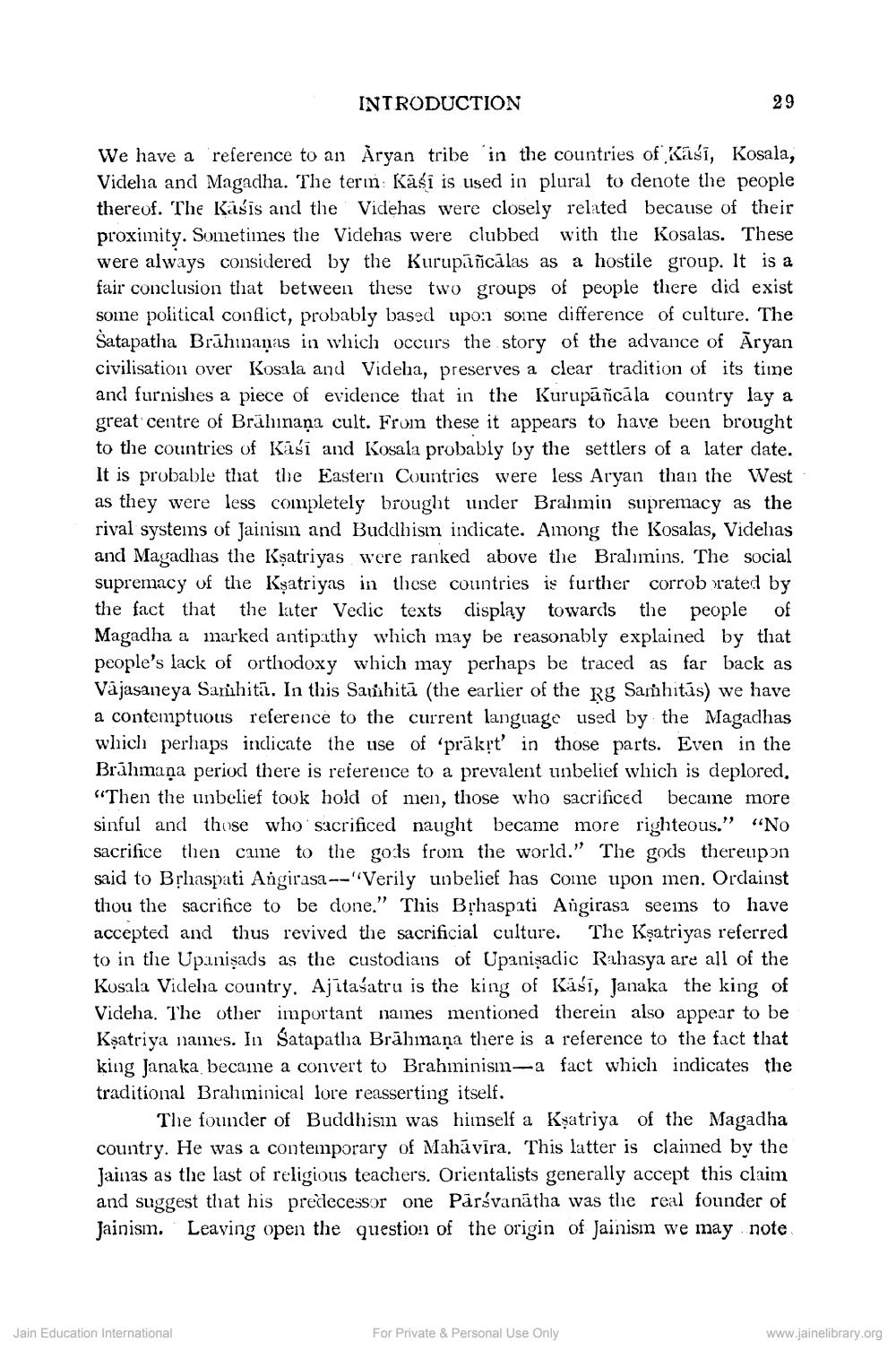________________
INTRODUCTION
29
We have a reference to an Aryan tribe in the countries of Kāśi, Kosala, Videla and Magadha. The terın Kāśi is used in plural to denote the people thereof. The Käsis and the Videhas were closely related because of proximity. Sometimes the Videhas were clubbed with the Kosalas. These were always considered by the Kurupāñcālas as a hostile group. It is a fair conclusion that between these two groups of people there did exist some political confiict, probably based upon some difference of culture. The Satapatha Brāhmaṇas in which occurs the story of the advance of Aryan civilisation over Kosala and Videha, preserves a clear tradition of its time and furnishes a piece of evidence that in the Kurupāñcāla country lay a great centre of Brahinana cult. Froin these it appears to have been brought to the countries of Kāśi and Kosala probably by the settlers of a later date. It is probable that the Eastern Countries were less Aryan than the West as they were less completely brought under Brahmin supremacy as the rival systems of Jainism and Buddhism indicate. Among the Kosalas, Videhas and Magadhas the Kşatriyas were ranked above the Bralumins. The social supremacy of the Kșatriyas in these countries is further corrob rated by the fact that the later Vedic texts display towards the people of Magadha a marked antipathy which may be reasonably explained by that people's lack of orthodoxy which may perhaps be traced as far back as Vajasaneya Sanhita. In this Sanhitā (the earlier of the Rg Samhitūs) we have a contemptuous reference to the current language used by the Magadhas which perhaps indicate the use of 'prākrt' in those parts. Even in the Brāhmana period there is reference to a prevalent unbelief which is deplored. «Then the unbelief took hold of men, those who sacrificed became more sinful and those who sacrificed naught became more righteous." "No sacrifice then came to the goals from the world." The gods thereupon said to Brhaspati Angirasa--"Verily unbelief has come upon men. Ordainst thou the sacrifice to be done." This Bfhaspati Angirasa seems to have accepted and thus revived the sacrificial culture. The Kșatriyas referred to in the Upanişads as the custodians of Upanişadic Rahasya are all of the Kosala Videha country. Ajitaśatru is the king of Kaśī, Janaka the king of Videha. The other important names mentioned therein also appear to be Kșatriya names. In Satapathia Brāhmaṇa there is a reference to the fact that king Janaka became a convert to Brahminism-a fact which indicates the traditional Brahıninical lore reasserting itself.
The founder of Buddhisin was himnself a Kșatriya of the Magadha country. He was a contemporary of Mahāvīra. This latter is claimed by the Jainas as the last of religious teachers. Orientalists generally accept this claim and suggest that his predecessor one Parávanātha was the real founder of Jainismn. Leaving open the question of the origin of Jainism we may note
Jain Education International
For Private & Personal Use Only
www.jainelibrary.org




